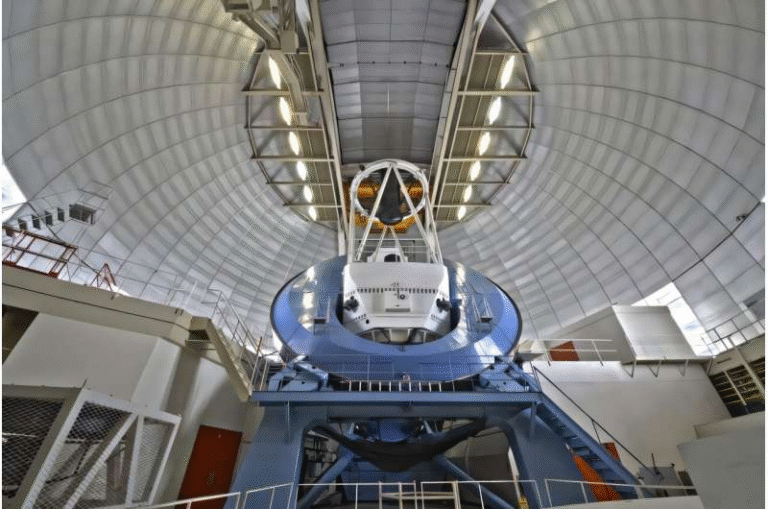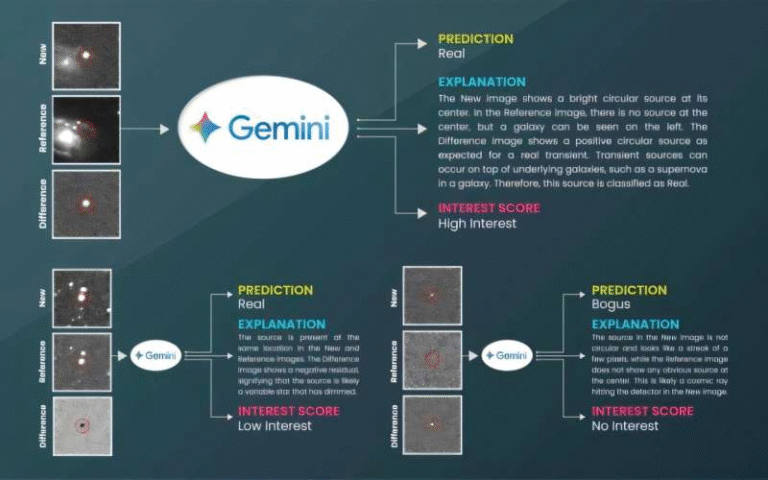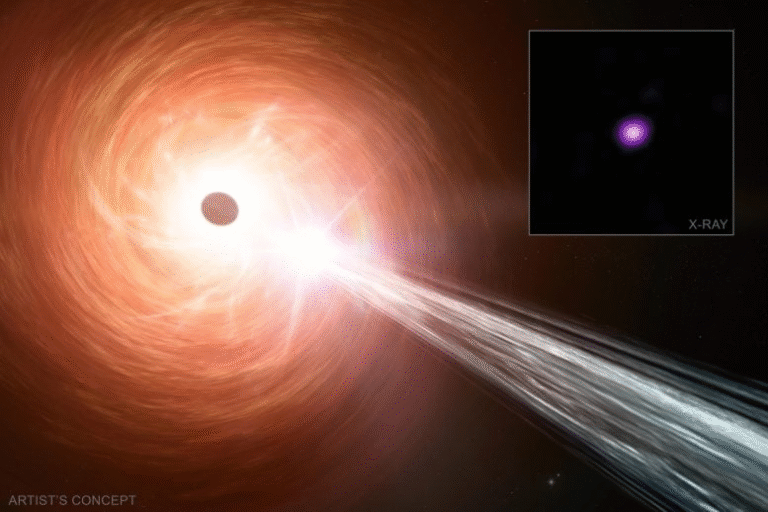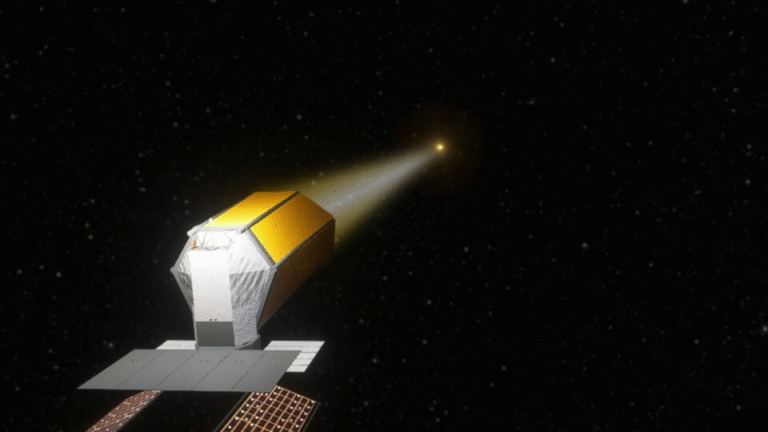Euclid Telescope Reveals Hidden Stars in Orion’s Dark Cloud LDN 1641

The European Space Agency’s Euclid space telescope has captured a remarkable view of a region that’s usually cloaked in cosmic darkness — the dark cloud LDN 1641 in the constellation Orion, roughly 1,300 light-years from Earth. This shimmering new image, taken with Euclid’s powerful Near-Infrared Spectrometer and Photometer (NISP) instrument, reveals a region teeming with young stars that are normally obscured by dense clouds of gas and dust.
In visible light, LDN 1641 appears almost pitch black, with only a few scattered stars breaking through the gloom. The thick dust grains in the cloud absorb and scatter visible light so effectively that the area looks like an empty patch of space. But Euclid’s infrared vision can see through the dust, unveiling hundreds of hidden stars and intricate structures within the cloud.
Peering Through the Dust
Euclid’s NISP instrument observes in near-infrared wavelengths, where dust is much less effective at blocking light. This allows scientists to peer deep into star-forming regions that are normally invisible. In the new image, magenta-colored spots and swirls mark stellar outflows — streams of gas ejected from newborn stars as they form inside their dusty cocoons. These jets are clear indicators of ongoing star formation, revealing where new suns are being born.
The upper left portion of the image shows where the dust begins to thin out, offering a glimpse beyond our galaxy into the more distant universe, peppered with faint background galaxies. This contrast — between our Milky Way’s stellar nursery and the distant cosmic backdrop — highlights the telescope’s extraordinary sensitivity and ability to capture both nearby and remote cosmic structures in one frame.
A Technical Triumph During Calibration
What’s particularly fascinating is that this striking image wasn’t part of Euclid’s primary science mission. It was taken in September 2023 as part of a guidance and pointing calibration test. During these tests, Euclid’s operations team needed a part of the sky that appeared nearly starless in visible light to fine-tune the telescope’s pointing accuracy. LDN 1641 turned out to be an ideal target because its thick dust blocks most visible starlight.
The result was more than just a successful engineering test — it was a visual triumph. The data from this test covered an area of about 0.64 square degrees, which is over three times the area of the full Moon as seen from Earth. All of it was captured in under five hours of observation time. The test confirmed that Euclid can point with extreme precision and maintain image stability, both of which are essential for the telescope’s ambitious mission goals.
Understanding LDN 1641 and Its Cosmic Neighborhood
LDN 1641 is part of the Orion Molecular Cloud Complex, one of the most famous and active star-forming regions in the sky. The “LDN” stands for Lynds’ Dark Nebula, a catalog of dark clouds compiled by astronomer Beverly Lynds in the 1960s. These dark clouds are dense concentrations of gas and dust where new stars are born.
Unlike some parts of Orion that host massive, hot stars, LDN 1641 is relatively quiet — it lacks the powerful ultraviolet radiation that can quickly disrupt star-forming material. This makes it a perfect natural laboratory for studying low- and medium-mass star formation. Astronomers estimate that LDN 1641 harbors more than a thousand young stellar objects, many of them still in the early stages of development.
By imaging this region in infrared light, Euclid provides a window into the hidden side of stellar nurseries. Scientists can study how stars evolve from dense clumps of gas, how they interact with surrounding material, and how their energetic outflows shape the environment around them.
Euclid’s Broader Mission
Euclid’s main purpose, however, isn’t to study star-forming regions like LDN 1641 — it’s to tackle one of the biggest mysteries in modern astrophysics: the nature of dark matter and dark energy. These two unseen components are thought to make up about 95% of the universe, yet their true nature remains elusive.
To unravel these mysteries, Euclid is conducting the largest 3D map of the extragalactic universe ever attempted. By measuring the shapes, distances, and distributions of billions of galaxies across more than one-third of the sky, Euclid aims to trace how cosmic structures evolved over time and how dark energy influences the universe’s expansion.
But while Euclid’s main focus is cosmology, the telescope’s instruments are so sensitive that it’s also generating a treasure trove of data for galactic and stellar research. Observations like LDN 1641 are “bonus science” — valuable by-products that allow astronomers to explore everything from dust properties in our galaxy to the early phases of star birth.
Why Infrared Eyes Matter
Infrared astronomy is a powerful tool for cutting through cosmic dust. Dust grains that easily block visible light become nearly transparent at infrared wavelengths. This allows telescopes like Euclid (and NASA’s James Webb Space Telescope) to see regions of space that were previously hidden.
While the James Webb Space Telescope (JWST) excels at zooming in on small areas with exquisite detail, Euclid’s strength lies in its wide field of view. Each Euclid image covers a large patch of sky — perfect for mapping large-scale structures and surveying entire star-forming regions at once. The telescope’s 16 detectors in its NISP instrument capture data at Y, J, and H infrared bands, which are later color-coded as blue, green, and red in processed images.
The jagged edges visible in the released image aren’t artifacts or errors — they come from how the detectors are arranged and how Euclid scans the sky. The team uses small spatial offsets and rotations during observations, which can leave small gaps in the edges of composite images.
Scientific Value of the Discovery
Images like this are more than just beautiful — they’re scientifically rich. By revealing the youngest stars and proto-stellar jets within LDN 1641, astronomers can refine models of early stellar evolution. They can measure how material flows into and out of forming stars, understand how clusters of stars interact, and investigate how different dust compositions affect the light that reaches us.
It also helps scientists better interpret infrared and visible-light observations from other telescopes. Knowing exactly how dust behaves at various wavelengths allows researchers to correct for it when studying galaxies, nebulae, and the early universe.
On a more technical level, this successful observation demonstrates that Euclid’s pointing system — a critical aspect of its ability to produce ultra-sharp, stable images — is functioning perfectly. This ensures that the telescope can meet its goal of capturing large, detailed, and distortion-free views of the cosmos.
A Glimpse Into the Future
Euclid’s work is just beginning. Over the next several years, it will systematically map billions of galaxies, measure the subtle distortions caused by gravitational lensing, and build a cosmic atlas unlike anything humanity has seen. Along the way, images like LDN 1641 will continue to provide unexpected discoveries within our own galaxy.
Even though this image was taken merely for calibration, it reminds us that the universe hides beauty everywhere, even in regions that seem dark and empty. With its sharp infrared vision and wide-sky reach, Euclid is not just looking outward into the distant universe — it’s also revealing the hidden corners of our cosmic backyard.
Research Reference: ESA – Euclid peers through a dark cloud’s dusty veil





